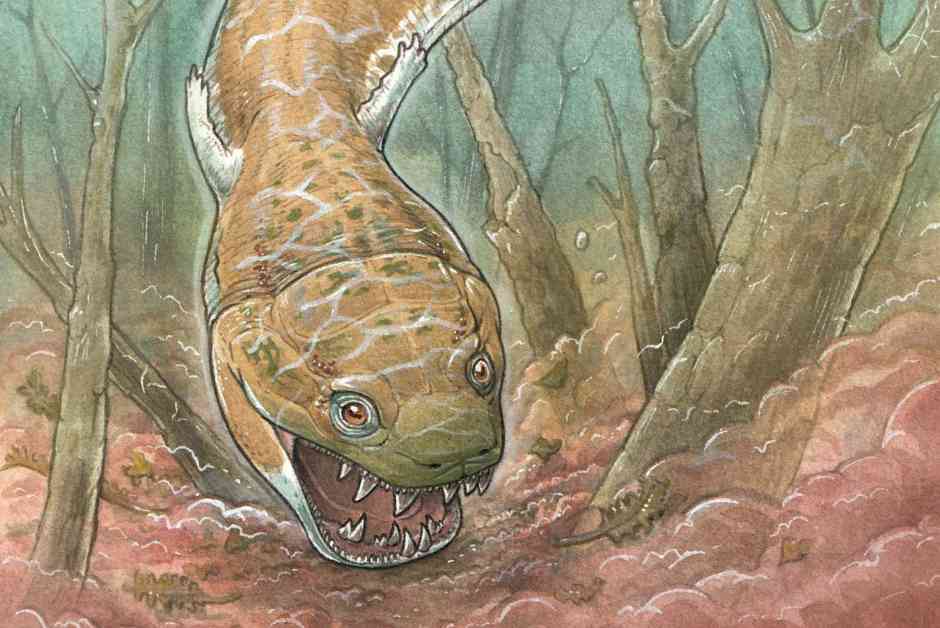In the ancient Namib desert 280 million years ago, a remarkable discovery has shed light on a massive predator that roamed the cold swamps. This predator, resembling a giant salamander, was named Gaiasia jennyae after the formation in Namibia and palaeontologist Jennifer Clack. The fossil, estimated to be 2.5 meters long with a 60-centimeter skull, is the largest of its kind ever found.
Unlike a true amphibian, G. jennyae belonged to an archaic group of tetrapods that eventually gave rise to various vertebrates, including reptiles, birds, and mammals. This ancient predator likely hunted like a crocodile, using its elongated body to swim like an eel in aquatic environments. Its reduced limbs made movement on dry land challenging, indicating its preference for water.
The discovery of Gaiasia jennyae in Namibia challenges our understanding of early tetrapod distribution. While most tetrapod fossils have been found in the northern hemisphere, the fossils from the Namib desert suggest a different story. The region where the fossils were discovered experienced harsh, cold-temperate climatic conditions due to glaciations, unlike the tropical climate in the northern hemisphere at the time.
Despite the challenging environment, the presence of fish fossils alongside Gaiasia indicates a rich vertebrate community in the region. This finding highlights the diversity and adaptation of prehistoric creatures to various climatic conditions, expanding our knowledge of ancient ecosystems.
The study of Gaiasia jennyae provides valuable insights into the evolution and behavior of early tetrapods. By reconstructing the life and habitat of this ancient predator, researchers can piece together the puzzle of prehistoric life in different parts of the world. The fossil record continues to surprise us with new discoveries that challenge our preconceptions and enrich our understanding of the natural world.






